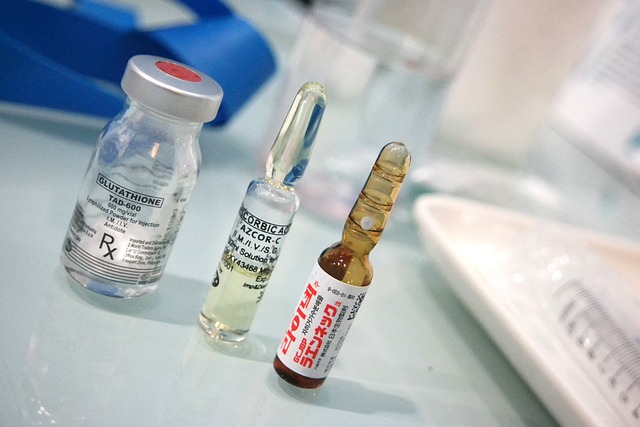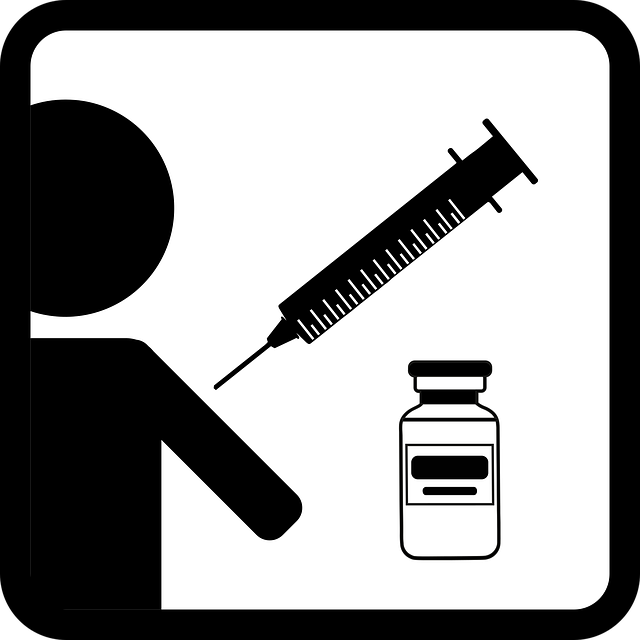Self-administered subcutaneous semaglutide injections are a popular, effective way to manage health conditions at home, particularly type 2 diabetes. This article provides a comprehensive guide on proper injection techniques for the semaglutide injectable form. It covers selecting the right injection site (e.g., abdomen or upper arm), preparing doses accurately, and safe insertion methods. Regular training and adherence to safety guidelines are essential for preventing complications. Potential side effects range from gastrointestinal issues to allergic reactions, requiring prompt medical reporting. Effective management involves tracking doses with logs or apps, setting reminders, and maintaining consistent injection schedules.
“Discover the power of self-administered subcutaneous injections, a game-changer in managing various health conditions. This comprehensive guide explores the benefits of semaglutide, a hormone that has transformed diabetes and weight management. Learn about the unique advantages of its injectable form, making treatment more convenient. From understanding the process to ensuring safety, we’ll walk you through each step. Master self-monitoring tips for optimal compliance, allowing you to take control of your health journey with confidence.”
Understanding Self-Administered Injections: A Overview

Self-administered subcutaneous injections are becoming increasingly common, especially with the rise in popularity of certain medication forms, like semaglutide injectable treatments. This method allows patients to manage their health at home, offering convenience and control over their treatment regimen. Understanding how to properly administer these injections is key to ensuring effective and safe use.
Semaglutide, for instance, is a medication often delivered via subcutaneous injection due to its long-lasting effects in treating conditions like type 2 diabetes. Patients are taught on proper injection technique, including where on the body to inject (typically the abdomen or upper arm), how to prepare the dose, and the best way to insert the needle. Regular training and adherence to safety guidelines are crucial to prevent complications, such as infection or injury to surrounding tissues.
Semaglutide: The Hormone and Its Benefits

Semaglutide is a hormone that has gained significant attention in the medical community for its versatile benefits, particularly when delivered via the subcutaneous route. As a semaglutide injectable form, it offers a convenient and effective treatment option for various conditions. This hormone mimics the action of natural glucose-regulating hormones, making it a powerful tool in managing diabetes and promoting weight loss.
One of its key advantages is its ability to lower blood sugar levels, making it invaluable for individuals with type 2 diabetes. The injectable form allows for precise dosing and regular administration, ensuring optimal blood sugar control. Additionally, semaglutide has been shown to aid in significant weight reduction, which can have far-reaching positive effects on overall health and well-being.
The Semaglutide Injectable Form: Advantages and Considerations

The Semaglutide Injectable Form offers several advantages for those managing certain health conditions. One of its key benefits is the once-weekly administration, providing convenience and flexibility in patient routines compared to more frequent injections. This long-acting formulation ensures consistent drug delivery, which can lead to better blood sugar control in diabetes patients.
When considering Semaglutide as a treatment option, it’s essential to weigh these advantages against potential side effects and individual patient needs. The injectable form may not be suitable for everyone, especially those with certain skin conditions or allergies. Additionally, proper training is necessary for self-administration to ensure safety and accuracy, which can be a consideration for patients managing their treatments at home.
Step-by-Step Guide to Administering Your Injection

Step-by-Step Guide to Administering Your Injection
1. Prepare Your Dosage: Start by retrieving the correct dose of semaglutide injectable form from its protective packaging. Double-check the dosage instructions provided by your healthcare professional.
2. Select the Right Location: Choose a clean, hairless area on your body for injection, such as your abdomen or upper arm. Disinfect the site with alcohol to minimize the risk of infection.
3. Prepare Your Injection Site: Gently dry the selected area after cleaning it. This ensures that the skin is ready for the needle penetration. Remove the protective cap from the injection device and attach the needle.
4. Insert the Needle: Hold the device steady, usually with your non-dominant hand, and insert the needle at a 90-degree angle to the skin. Ensure it’s deep enough to avoid damage to surrounding tissues.
5. Deliver the Injection: Press the plunger slowly and firmly to inject the semaglutide solution. Maintain pressure for a few seconds after the injection to prevent leakage.
6. Remove the Needle: Gently pull the needle out, applying light pressure on the skin to avoid bleeding. Dispose of the used needle safely according to local regulations.
7. Clean and Disinfect: Thoroughly clean your injection site with water or alcohol again to maintain hygiene and reduce the risk of adverse reactions.
Safety Measures and Potential Side Effects

Self-administration of subcutaneous injections, especially with medications like semaglutide in its injectable form, requires a keen understanding of safety protocols to ensure effective and risk-free use. It’s paramount to adhere strictly to the prescribed dosage and injection frequency as directed by healthcare professionals. Cleanliness is another critical aspect; always use sterile needles and syringes, and wash your hands thoroughly before and after the procedure to minimize the risk of infection.
Potential side effects associated with semaglutide injections include mild to moderate gastrointestinal issues like nausea, vomiting, or diarrhea. In rare cases, allergic reactions may occur, leading to symptoms such as skin rashes, itching, or difficulty breathing. As with any medication, it’s essential to report severe or persistent side effects to a healthcare provider promptly. Regular monitoring by a medical professional can help manage these effects and ensure the best possible treatment outcomes.
Tips for Effective Self-Monitoring and Compliance

Maintaining effective self-monitoring and compliance with subcutaneous injections, like those of semaglutide’s injectable form, is crucial for successful treatment management. Regularly tracking your doses ensures that you stay on track with your healthcare plan. Start by keeping a simple log or using dedicated mobile apps designed for medication tracking. Note down the date, time, and amount of each injection to create a consistent record. This practice helps identify patterns and any potential discrepancies, allowing for swift adjustments if needed.
Additionally, setting reminders and establishing a structured routine can greatly enhance compliance. Many healthcare providers recommend preparing your injection space in advance, keeping your supplies organized, and scheduling injections at the same time daily or weekly. With semaglutide’s once-weekly administration, this becomes a manageable habit. Consistency not only ensures effective treatment but also reduces the risk of adverse reactions due to irregular dosing.
